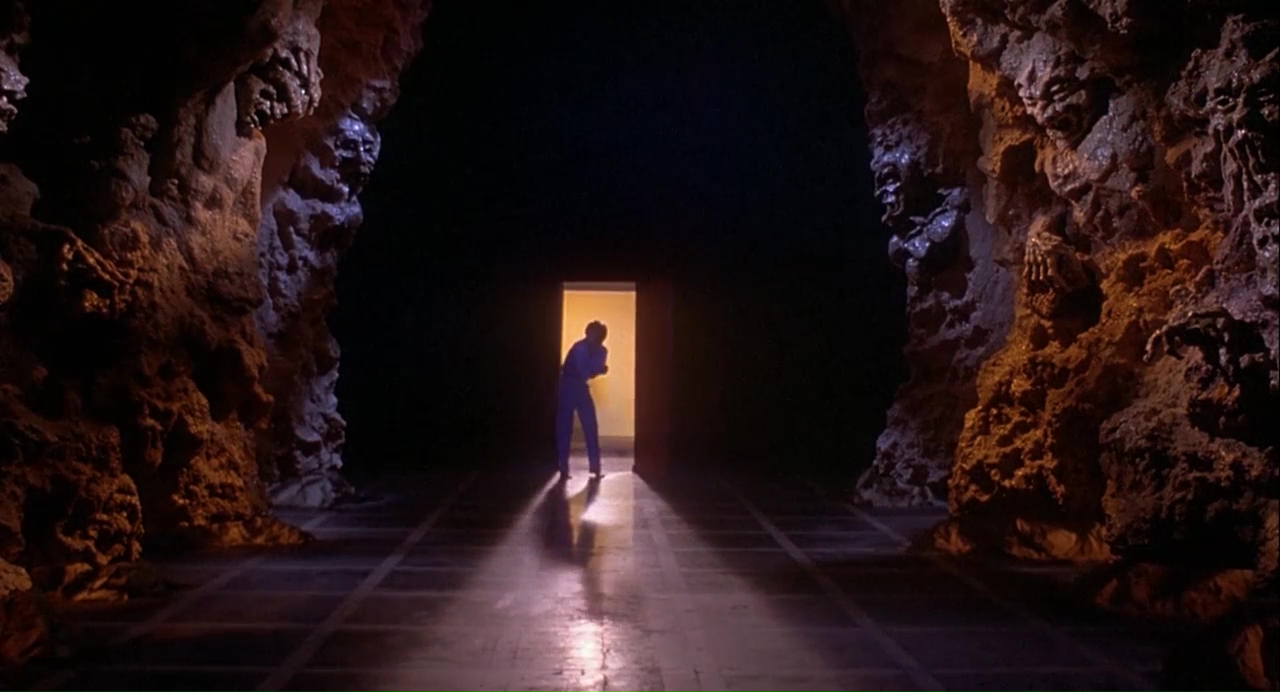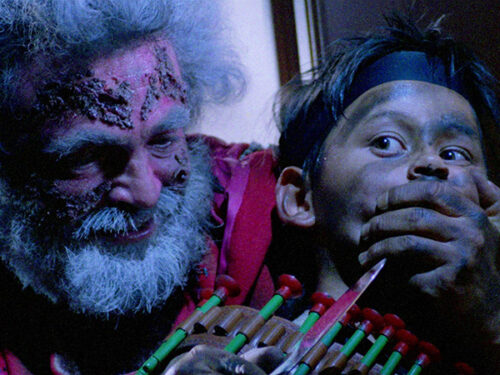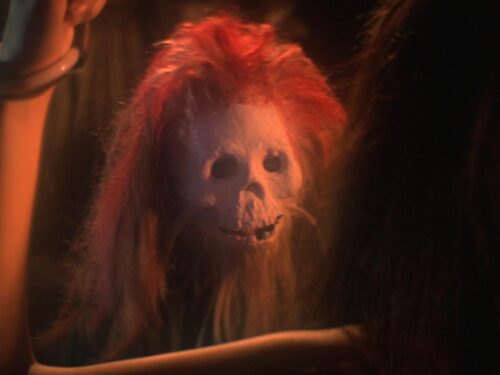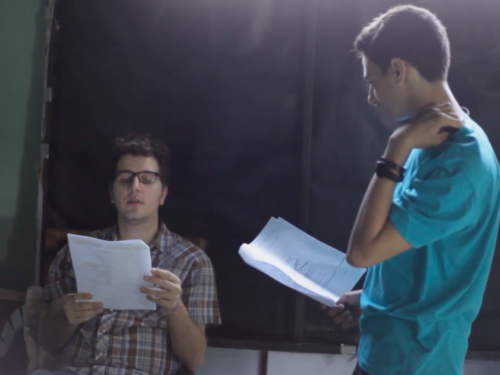To cap off our October Horror series, Jason Michelitch explores the maestro of Italian horror’s style through Suspiria, Tenebre, Inferno and Mother of Tears
There is a moment at the very beginning of Suspiria (1977) that has come to crystallize what I find most engrossing about Dario Argento’s best films. It comes well before Suzy Bannion arrives at the Freiburg dance academy where the majority of the film’s horrors will take place, even before her haunting taxi ride to the academy through glowing woods that echo with whispers of witches.
It takes place in the first 45 seconds of the film: Suzy walks through the airport. A shot from her point-of-view shows us a long hallway leading to the exit. The automatic doors slide open for people to move in and out. When the doors open, the airport goes silent — all diegetic noise ceases, replaced on the soundtrack by a tinkling phrase from the movie’s theme. Then the door closes. The music disappears. The noises return.
This happens twice. When Suzy walks to the door it hisses open and the noise of the airport is replaced again, but this time it is not only music but also environmental sounds — blustering wind, rain, thunder — that pour in through the open door. Suzy’s hair and scarf fly up around her head in a gust of air, and she walks out into a torrential rainstorm in a pitch black night pierced only by stray swaths of neon color.
The film cuts to an extreme close-up of the door mechanism as it hisses back shut. The airport door had been a portal from one world to another, from the airport with its crowds of people and naturalistic background sounds, to a nightmare world constructed solely out of terrors, victims and the spaces between them. And now Suzy, and we, are on the other side of that portal and there’s no going back.
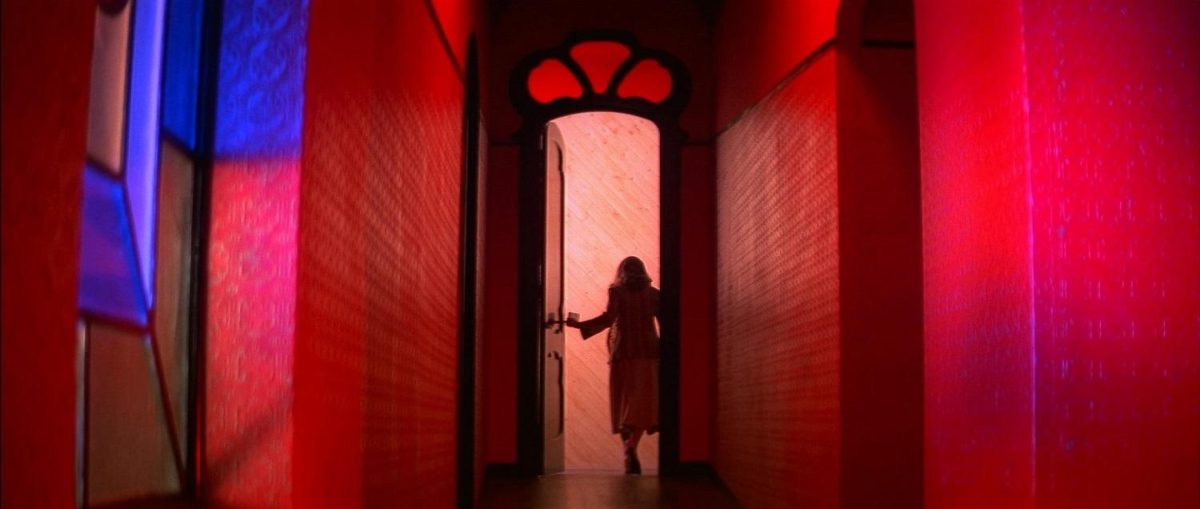
Much is often made of Argento’s debt to Hitchcock. Saying that someone making thrillers in the mid/late 20th century is influenced by Hitchcock is hardly saying anything at all, but Argento stands alongside Brian De Palma, David Fincher and David Lynch as one of the directors to most thoroughly and profoundly absorb the lessons of the master. Where he most differs from the others is that, rather than borrowing Hitchcock’s narrative strategies, tension setups or iconography, Argento takes Hitchcock’s metaphysics.
A Hitchcock film is a hermetically sealed aesthetic experience. Everything you see and hear is tightly controlled. Part of the pleasure of a Hitchcock film is the firm hand guiding you down a carefully cultivated path, the sense of an elegant mechanism moving everything into place at just the right time. But sacrifices have to be made to achieve that kind of perfection, and what Hitchcock sacrifices is the ebb and flow of human emotions, behavior, life itself.
For Hitchcock and his disciples like de Palma and Fincher (Lynch is a different kind of beast), this sacrifice is made on the altar of entertainment and excitement. The only way to achieve the kinds of shock and suspense they are after is to exert a total Hitchcockian control over the frame and the people in it. Argento seems to have taken the same technical approach to the frame and its subjects, but embellishes and extends it to its full philosophical conclusion. The hermetic seal and aura of control are not just means to get from point A to point B, but are the very nature of the world itself as he imagines it. What is a subtextual byproduct of Hitchcock’s interest in narrative excitement becomes, in Argento’s hands, the core metaphysical truth of his films.
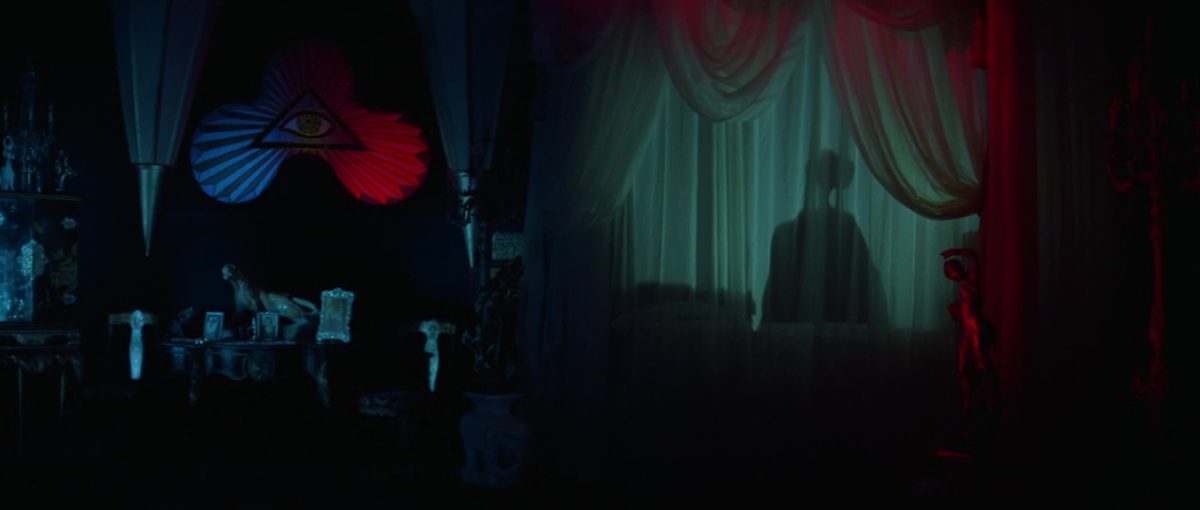
Argento’s style, at its strongest, is one of saturation. He creates a totalizing atmosphere of mystery and horror. In Argento’s worlds, there is no neutral ground. Every object, every space is suffused with menace. Coming out of the giallo murder mystery tradition, even Argento’s early films begin to smother the puzzle logic of detective fiction, building scenes motivated as much by tone or feeling than plot. Suspiria, considered by many to be his masterpiece, is his first film to formally reject the shackles of rationality by embracing the supernatural as a theme. But the turn to the occult is merely a means of focusing and embellishing the ideas that were already coming to dominate his style.
View the complete list of Split Tooth Media Presents: 31 Days of October Horror
Argento meant for Suspiria to be the first of a trilogy of supernatural horror films loosely based on Thomas de Quincey’s Suspiria de Profundis, in which de Quincey imagines a mythological counterpoint to the Three Fates and Three Graces: a trinity of Sorrows, named Mater Lachrymarum (Mother of Tears), Mater Suspiriorum (Mother of Sighs), and Mater Tenebrarum (Mother of Darkness). Argento reimagined these “Ladys of Sorrow” as immortal witches who have haunted mankind since the Dark Ages, conjuring our sorrows, sowing pain, reaping death. Each film would deal with a different “Mother.”
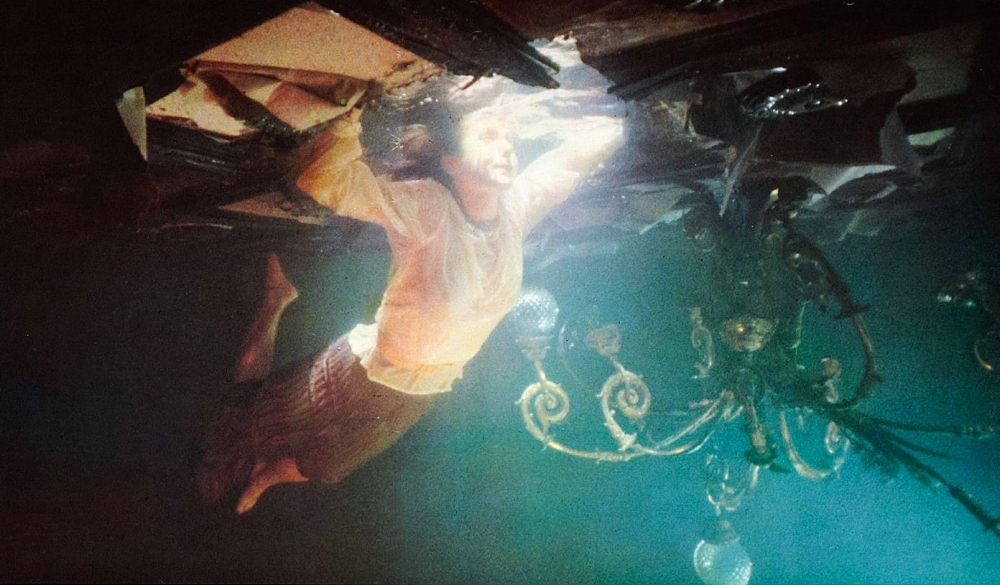
Suspiria was a surprise hit, and Argento capitalized on it to get the next part of the trilogy into production. After Suspiria and the Mother of Sighs, Inferno (1980) would explore the world of Mater Tenebrarum, the Mother of Darkness, or Death. Illness resulted in Argento having to direct much of the film lying down and medicated, and there are conflicting stories as to how much assistance his mentor, Mario Bava, provided on the film. Regardless of the circumstances (or perhaps even because of them?), Inferno is as pure and total a nightmare world as Suspiria, and while the latter has a higher reputation and is a few degrees more narratively coherent, it is Inferno that I return to more and more.
As much of a departure from the giallo genre as Suspiria is, there are still vestigial pieces of the detective story in its structure, still a mystery to solve and a villain to defeat swimming beneath the delirious hallucinatory terrors that dominate the movie. The mystery of Inferno never truly coheres, and just as it threatens to, Mater Tenebrarum appears as the personification of Death, and the film collapses on itself. Plot summaries on the internet claim that the collapse is literal, and that it crushes the Mother of Darkness, but that’s not what I see when I watch that scene. I see a film that has gone so far into imagining the contours of death as a concept that it can no longer live.
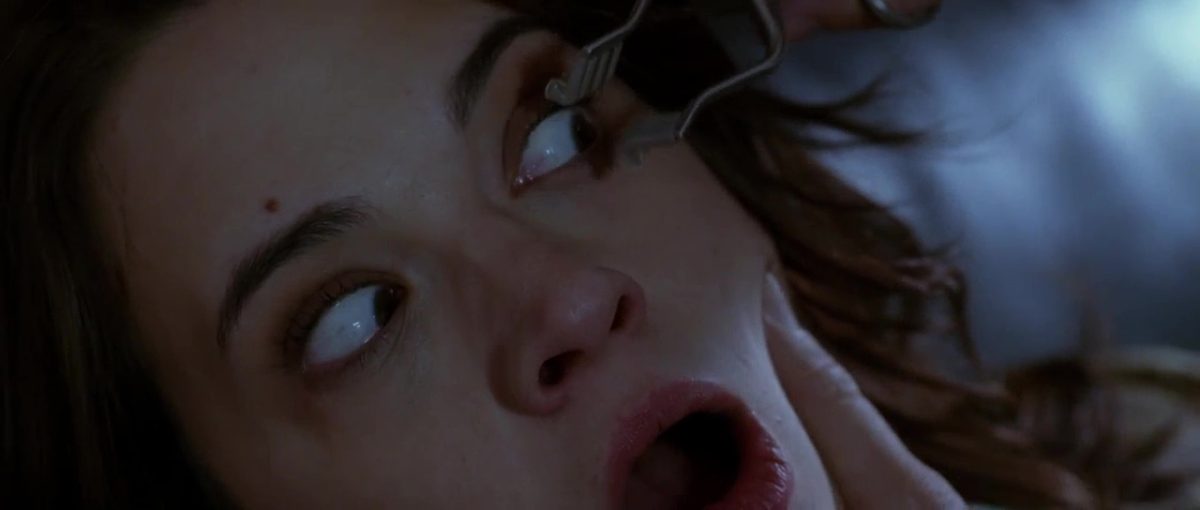
Inferno was a commercial and critical failure, and Argento returned to giallo, abandoning his supernatural trilogy until 2007, when he made La Terza Madre (The Third Mother/Mother of Tears). It’s a good film, a strong effort to recapture and complete his thought from nearly three decades prior. But too much time had passed for it to be more than that. The spirit that animates Suspiria flows into Inferno, which in turn overflows its own borders and disintegrates. La Terza Madre is a strong filmmaker trying to remember what that spirit might have felt like, but it can’t call it back to life. And besides, to my mind, the trilogy already has a third part. Argento’s immediate follow-up to Inferno, his purported return to “normal” giallo, is — ironically, probably unintentionally, but undoubtedly — drenched in the overflow of the spirit of the Three Mothers.
Tenebre (1982) has nothing whatsoever to do with Mater Tenebrarum on a plot level, but it depicts a world that she touches and controls at every point. It is a film with a genuine murder mystery, but the solving of that mystery only leads to further darkness, more death. Argento shot the film on location in Rome, but claimed it was a science-fiction film set five years in the future (he must have had some understanding, on some level that he was still exploring the fantasy world of his two previous films). The film presents the brutalist architecture of 1980s Italy mostly in bright sunlight, and the blank, drab, flat planes form a sinister geometry that imprisons the characters and the viewer as much as the shadowy, gothic, haunted mansions do in Suspiria and Inferno.
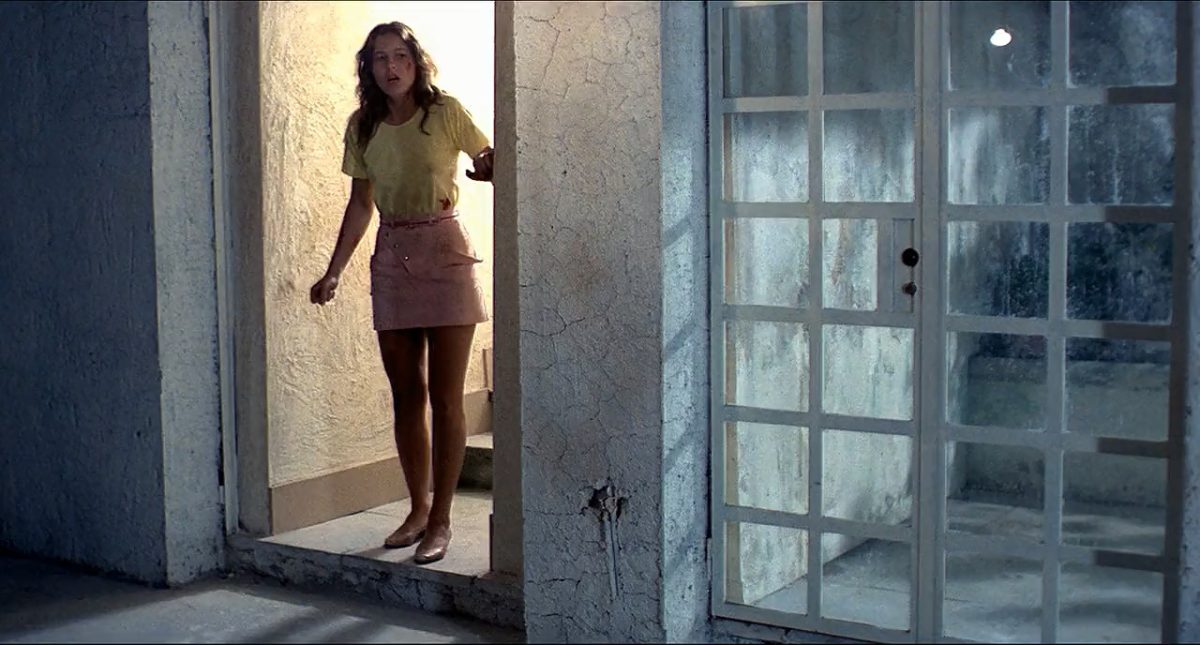
In one of the film’s most arresting scenes, a woman is being chased by an unseen killer, and she passes by a tall fence. From behind the fence, a fierce, angry dog barks at her, a shock that at first seems like a pro forma piece of jump scare misdirection — except that, as she runs away, the dog keeps barking, and then it jumps the fence and begins chasing her as well. The moment is not only surprising and deeply horrifying, but revealing of the totality of the menace of the world Argento has created.
There is nothing in this world that is incidental, nothing that is not a functioning part of the whole. Evil is carried on the wind, from the first gust through the airport door in Suspiria, to the final moment of Tenebre, in which something moves, and someone dies, but there is no cause, no motive, no person who can be found to blame it on. But it can’t be called an accident. There are no accidents here.
Find the complete October Horror Archive here:
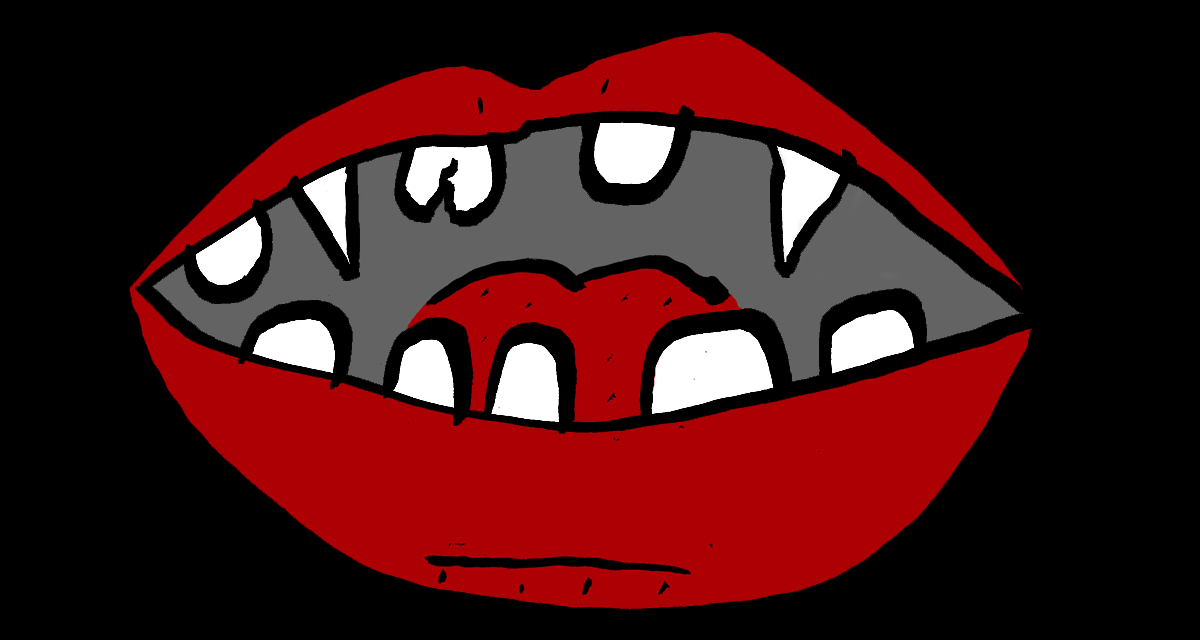
(Split Tooth may earn a commission from purchases made through affiliate links on our site.)

